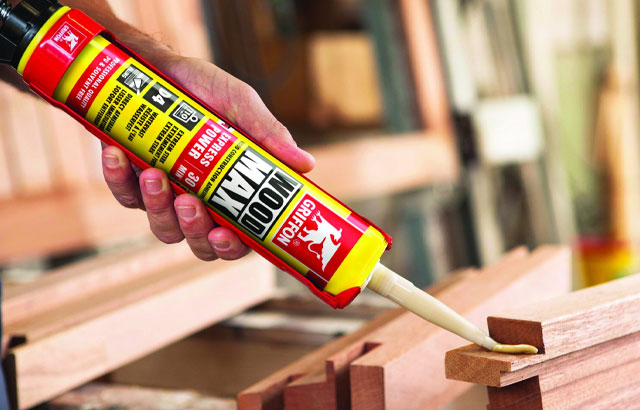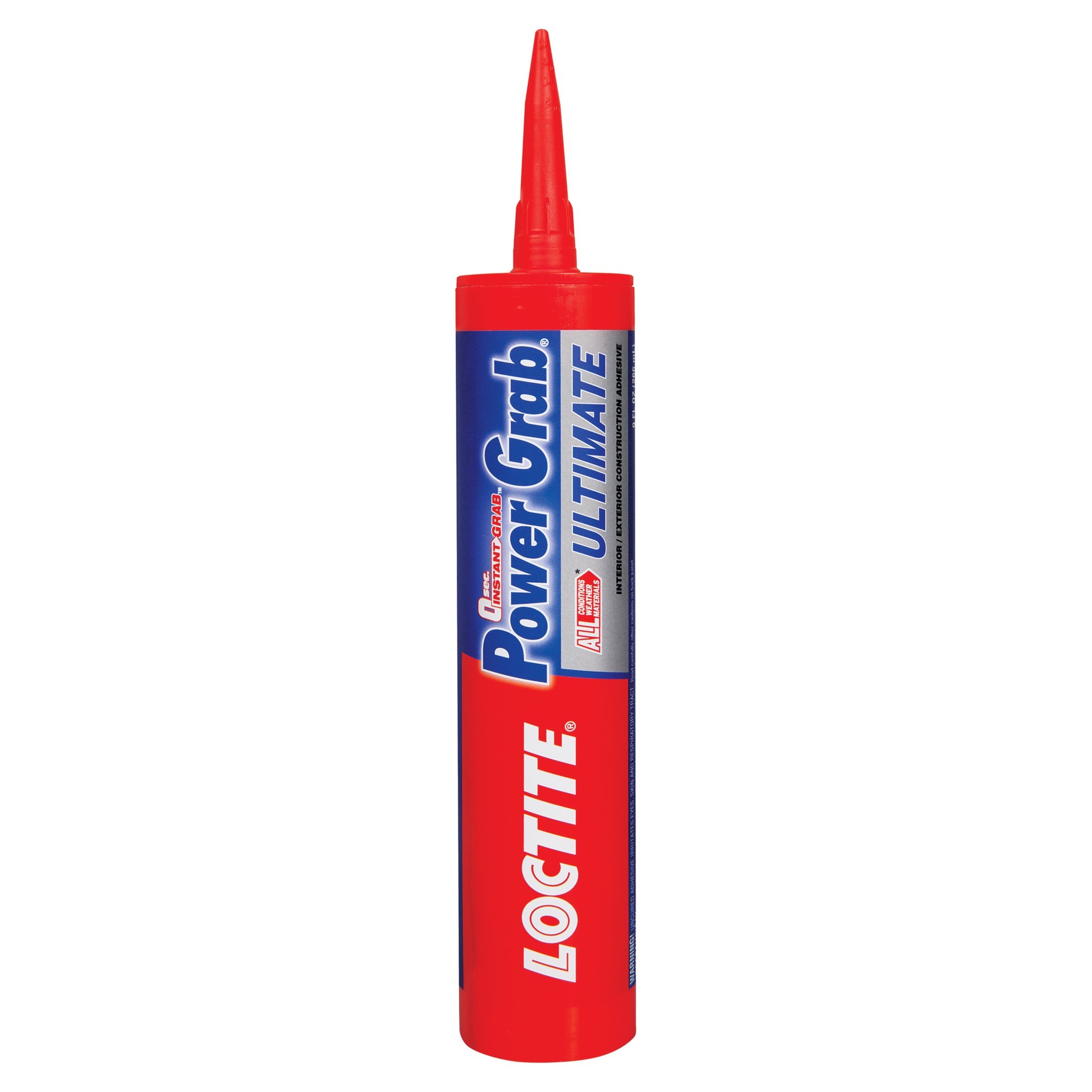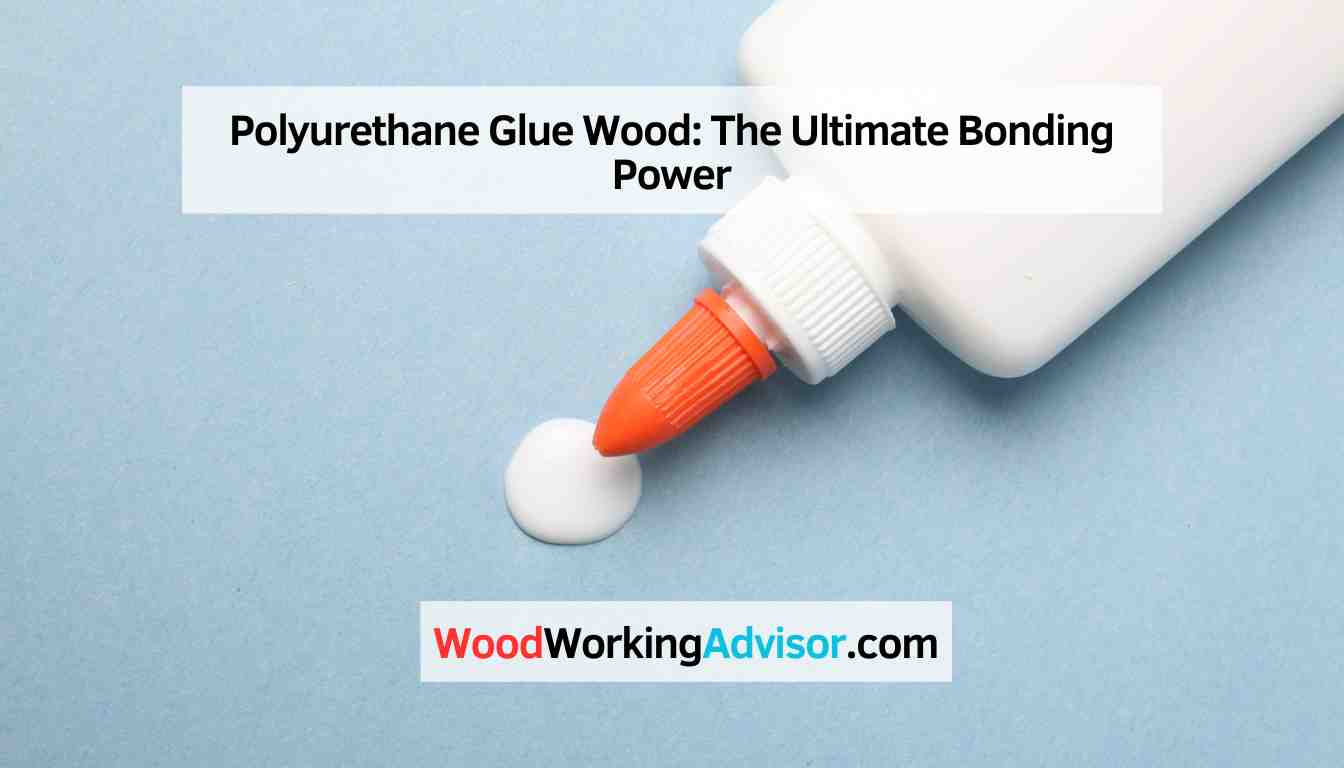Polyurethane glue is a strong adhesive designed specifically for wood. It creates a durable bond, making it an excellent choice for woodworking projects.
The glue is waterproof and resistant to heat, making it suitable for both indoor and outdoor use. Polyurethane glue also expands as it cures, filling gaps and creating a solid connection. This type of glue works well with a variety of wood types, providing a versatile and reliable bonding solution.
Additionally, polyurethane glue is easy to apply and requires minimal clamping, saving time and effort during the assembly process. Its strength and versatility make it a popular choice for professional woodworkers and hobbyists alike.

Credit: www.amazon.com
Advantages Of Polyurethane Glue
Polyurethane glue is a versatile and dependable adhesive option for woodworking projects. Its advanced formulation offers several distinct advantages over traditional wood glues, making it a popular choice among carpenters and hobbyists alike.
Water And Heat Resistance
Polyurethane glue is highly resistant to both water and heat, making it ideal for projects that will be exposed to moisture or temperature variations. This ensures long-lasting, durable bonds that can withstand outdoor conditions and extreme environments with ease.
Gap-filling Capabilities
One of the standout features of polyurethane glue is its impressive gap-filling capabilities. Whether you are working with uneven surfaces or joining pieces with small gaps, this adhesive can effectively fill and bond irregular spaces, resulting in strong and secure connections between parts.
How To Use Polyurethane Glue
Using polyurethane glue for woodworking projects can be a game-changer, offering exceptional strength and versatility. Understanding the proper techniques for utilizing this adhesive is essential to achieving optimal results. Let’s delve into the surface preparation and application techniques that can help you maximize the potential of polyurethane glue in your woodworking endeavors.
Surface Preparation
Before using polyurethane glue, it’s crucial to ensure that the surfaces to be bonded are clean, dry, and free from any existing finishes or contaminants. This can be achieved through sanding or scraping the surfaces to remove any residues or rough spots.
Here are some key surface preparation tips for using polyurethane glue:
- Sand the surfaces: Roughen the surfaces to enhance bonding.
- Clean the surfaces: Remove dust, oil, or any contaminants from the bonding areas.
- Dry the surfaces: Ensure the wood surfaces are completely dry for optimal adhesion.
Application Techniques
Applying polyurethane glue requires precision and attention to detail to ensure a strong and durable bond. When using this type of adhesive, it’s essential to apply adequate pressure and adhere to the recommended drying times for optimal results.
Here are some effective application techniques for polyurethane glue:
- Apply the adhesive evenly: Use a brush or roller to distribute the glue uniformly across the surfaces to be bonded.
- Allow for proper clamping: Ensure the clamped pieces remain undisturbed during the curing process.
- Follow recommended drying times: Allow the glue to cure for the specified duration before handling the bonded surfaces.
Tips For Effective Bonding
For effective bonding using polyurethane glue on wood, ensure surfaces are clean and fit closely. Apply glue sparingly, clamp pieces together firmly, and allow sufficient drying time. Prioritize safety by wearing protective gear and working in a well-ventilated area.
Introduction: Tips For Effective Bonding
If you’re working on a woodworking project and looking for a reliable adhesive, polyurethane glue wood is an excellent choice. Not only does it provide a strong bond, but it also offers excellent resistance to moisture, heat, and chemicals. To ensure successful bonding, it’s important to follow a few essential tips. In this article, we’ll explore the key factors that contribute to effective bonding, including proper clamping and curing time considerations.
Proper Clamping
When using polyurethane glue wood, proper clamping is crucial to achieving a strong bond. Here are some useful tips to consider:
- Ensure that the surfaces to be bonded are clean and free of dust or debris.
- Apply a thin and even layer of polyurethane glue to both surfaces.
- Align the pieces precisely before applying pressure.
- Choose the appropriate clamping method based on the size and shape of the project.
- Use enough pressure to create a tight bond, but be cautious not to overload fragile joints.
Curing Time Considerations
The curing time of polyurethane glue can vary depending on several factors, such as temperature and humidity. Here are some considerations to keep in mind:
- Follow the manufacturer’s instructions regarding the recommended curing time.
- Be aware that a longer curing time may be necessary in colder or more humid environments.
- Avoid excessive exposure to moisture during the curing process.
- Remember that the bond will become stronger as the glue fully cures.
- Plan your project timeline accordingly to allow sufficient curing time before subjecting the bond to stress or load.
By following these tips for effective bonding with polyurethane glue wood, you’ll ensure reliable, long-lasting results for your woodworking projects. Whether you’re joining pieces for furniture or tackling a home improvement task, a strong bond is essential for the overall integrity and durability of your work. Remember to practice caution and patience when working with this adhesive, and enjoy the satisfaction of a well-executed project.

Credit: www.protrade.co.uk
Common Mistakes To Avoid
Applying too much polyurethane glue can lead to messy, uneven adhesion.
Excess glue may squeeze out from joints, affecting the wood finish.
Always read and adhere to the usage guidelines of the polyurethane glue.
Failure to follow instructions can result in weakened bond strength and unsatisfactory results.
Applications Of Polyurethane Glue
Polyurethane glue is widely used in woodworking applications due to its strong and durable bond. It provides excellent adhesion, resistance to moisture, and can be used on various wood surfaces, making it a reliable choice for carpentry projects.
Polyurethane glue, also known as PU glue, is a versatile adhesive that offers a wide range of applications in woodworking projects. Whether you’re a professional furniture maker or a DIY enthusiast, this strong adhesive can enhance the durability and quality of your creations. From furniture making to outdoor wood projects, polyurethane glue proves to be an excellent choice.
Furniture Making
When it comes to furniture making, polyurethane glue is a game-changer. Its strong bonding properties make it ideal for joining different types of wood, including hardwoods and softwoods. Whether you’re crafting a delicate chair or a sturdy table, this adhesive ensures a long-lasting hold. Plus, unlike other glues, it expands as it cures, filling in any gaps and creating a solid bond. This makes it especially useful for complex joinery and intricate designs.
In addition, polyurethane glue is waterproof and resistant to heat, making it suitable for furniture that may be exposed to outdoor conditions or high temperatures. It provides excellent resistance to moisture, ensuring that your furniture remains stable and durable, even in humid environments. As a bonus, it can also bond other materials commonly used in furniture making, such as plastic or metal.
Outdoor Wood Projects
Outdoor wood projects can face a range of challenges, from exposure to the elements to constant temperature fluctuations. Fortunately, polyurethane glue is up to the task. Its waterproof nature and resistance to temperature changes make it a perfect choice for outdoor projects, such as garden benches, pergolas, or wooden decks.
Moreover, polyurethane glue offers excellent UV resistance, preventing degradation and yellowing of the adhesive over time. This ensures that your outdoor wood projects retain their beauty and strength, even after years of sun exposure. So, whether you’re building a gazebo or repairing outdoor furniture, you can rely on polyurethane glue to provide a durable and long-lasting bond.
Overall, the applications of polyurethane glue in woodworking are vast and varied. Its versatility, strength, and durability make it an excellent choice for furniture making and outdoor wood projects. With its impressive bonding capabilities, resistance to moisture and temperature changes, and UV resistance, this adhesive can enhance the quality and longevity of your creations. So, next time you embark on a woodworking project, consider incorporating polyurethane glue into your toolkit for reliable and long-lasting results.
Comparing Polyurethane Glue With Other Adhesives
Polyurethane glue is a versatile and strong adhesive that has gained popularity in woodworking projects due to its exceptional properties. In this section, we will compare polyurethane glue with other adhesives, focusing on its strength and durability as well as its versatility.
Strength And Durability
- Polyurethane glue offers exceptional strength and durability, making it an ideal choice for structural woodworking applications. It creates a strong bond that can withstand heavy loads and external pressures.
- Unlike traditional wood glues, polyurethane glue is not affected by moisture, making it suitable for both indoor and outdoor projects. It is resistant to water, heat, and chemicals, ensuring long-lasting bonding results.
- The ability of polyurethane glue to expand as it cures allows it to fill gaps and voids in the wood, resulting in a more secure and stable joint compared to other adhesives.
Versatility
- Polyurethane glue is compatible with various materials, including wood, metal, plastic, and ceramic, making it a versatile adhesive for a wide range of projects.
- It can be used for bonding dissimilar materials, such as wood to metal, providing a reliable and strong bond that withstands different environmental conditions.
- The foaming property of polyurethane glue allows it to fill irregular surfaces and create a strong, gap-free bond, enhancing the overall quality and integrity of the project.
Final Thoughts
As we conclude our discussion on polyurethane glue wood bonding, it’s clear that this versatile adhesive offers many advantages for woodworkers. Its strong, durable bond and resistance to moisture and heat make it an ideal choice for various woodworking projects. However, it’s essential to consider future trends in wood bonding and the potential evolution of polyurethane glue in the woodworking industry.
Future Trends In Wood Bonding
The future of wood bonding is likely to involve advancements in adhesive technology, such as the development of new formulations and improved bonding methods. As the demand for sustainable and eco-friendly products continues to grow, we can expect to see a focus on environmentally friendly adhesives that minimize environmental impact.
Furthermore, the integration of digital technologies and automation in woodworking processes may lead to innovative bonding techniques, optimizing efficiency and precision in wood assembly. These advancements will shape the future landscape of wood bonding, including the use of polyurethane glue in combination with emerging technologies.
Conclusion
In summary, polyurethane glue wood bonding offers a robust solution for various woodworking applications, providing a durable and water-resistant bond. However, keeping an eye on future trends in wood bonding will ensure woodworkers stay abreast of innovative techniques and materials. Embracing these trends will undoubtedly contribute to the ongoing evolution of wood bonding practices.

Credit: www.loctiteproducts.com
Frequently Asked Questions On Polyurethane Glue Wood
What Is Polyurethane Glue Used For In Woodworking?
Polyurethane glue is commonly used in woodworking for its strong and durable bond. It is ideal for joining different types of wood, laminating veneers, and filling gaps. Due to its waterproof properties, it is also suitable for outdoor projects.
How Long Does It Take For Polyurethane Glue To Cure?
The curing time of polyurethane glue can vary depending on factors such as temperature and humidity. Generally, it takes about 24 hours for the glue to fully cure and reach its maximum strength. However, it’s best to refer to the manufacturer’s instructions for specific curing times.
Is Polyurethane Glue Waterproof?
Yes, polyurethane glue is waterproof. It forms a strong bond that can resist moisture and withstand exposure to water. This makes it an excellent choice for projects that require durability and resistance to the elements, such as outdoor furniture or marine applications.
Can Polyurethane Glue Be Sanded And Painted?
Yes, polyurethane glue can be sanded and painted. Once the glue has fully cured, it can be sanded to achieve a smooth surface. It is also compatible with most paints and finishes, allowing you to customize your woodworking projects according to your preferences.
Conclusion
Overall, polyurethane glue is a versatile adhesive for wood projects due to its strong bond and water resistance. Whether you’re a DIY hobbyist or professional woodworker, polyurethane glue can be a valuable addition to your toolbox. Its reliability and performance make it a top choice for joining wood pieces effectively.


